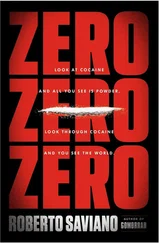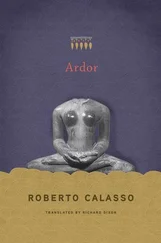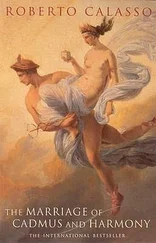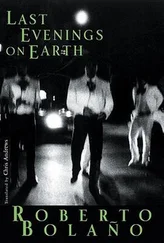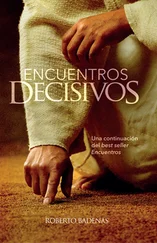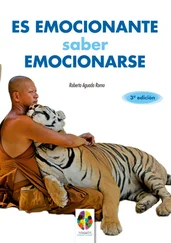Cows were important, indeed vital, to the Āryas, just as they were to the Dinkas along the Nile and to many other tribes of nomadic herdsmen. But it was only among the Āryas that cows became, like the unknown quantity in algebra, an abstract agent that could be applied to everything, transform everything. When they said “the cows,” the Āryas hinted at a secret that was an operation of the mind. The cows were water, coinage, word, woman, dawn. They were the unit of exchange, the lingua franca of existence. The Āryas had the revelation that it is not only the element on which one operates that may be secret but likewise the operation itself. Anyone who does not know this is excluded. He does not know “the secret name of the cows.” Actually, the cows have twenty-one secret names. The uninitiated would hear the Āryas pronouncing them and imagine they were raving in some obsession. In fact they were experimenting with speech raised to a higher power, an abstraction hitherto unknown that now entirely reshuffled the pack of appearances. Before each word, they were seized by panic in the face of overwhelming allusiveness, a devastating expansion of meanings. But at the same time they were enchanted when the scattered elements of the world came together like a herd within the receptacle of consciousness, which vibrated as it named, evoked, invoked. Thus did the Vedie hymns make themselves manifest.
No artifacts have come down to us from the Vedic era. Nothing that those who intoned the hymns of the Ṛg Veda touched with their hands has survived. Not merely because wood rots faster in a tropical climate. Not merely because they chose not to build in stone. Not merely because they decided not to have temples. The hymns speak of palaces with a hundred gates. They speak of well-crafted jewels. Of bronze palisades. They list the paraphernalia of ritual. They speak of arms and chariots. It is as if everything had been pure mental reality that allows the object to appear, then reabsorbs it. What remained were the forests, scarred here and there where the fire had burned. And the hymns, the meters, the names. They preserved words and fire. What else did one need?
For hundreds and hundreds of years, before the Āryas came, there were cities on the hills above the Indus valley. They had cobbled roads, huge baths, canals, engraved seals, defensive walls, granaries. None of this is mentioned in the Vedas. Yet the hymns do speak of Indra demolishing a hundred púr in his warrior charge. Some have understood púr to mean “walls”—and think the passage alludes to the walls around Mohenjo-daro and Harappa being demolished by the invading Āryas. But the more plausible meaning of púr is “livestock corral.” Thus the Vedic lines might refer merely to cattle rustling or sheep stealing. No remains give conclusive support to the notion that the towns of the Indus valley were destroyed by the Āryas. Though there is nothing to say they were not. It may well be that there was a gap of around two hundred years between the destruction of these towns and the arrival of the Āryas. But aside from chronological inconsistencies, clearly a great blank separates the Āryas, who left nothing tangible at all, from the inhabitants of the Indus valley, whose seals traveled as far away as Mesopotamia.
The further they pushed on into the vast Sindhu plain, the more the Āryas turned their backs on the soma , the inebriating plant that grew only in the mountains. It was soma that had given them their strength and vision, and with the impetus generated by that strength and vision they were now conquering something that would deny them access to soma , except through memory. A different landscape lived on in their minds. A northern homeland of long, long nights, prodigious dawns. That was the territory where truth was manifest. Each new conquest was but a temporary camp set up further and further from the place of meaning, useful only insofar as it refreshed the memory. Already living in places where the length of the days hardly varied, they cherished and nourished that memory most stubbornly in word and gesture. To their eyes, every image of beauty, of seduction, of splendor, emanated from a dawn long faded beyond the mountains, to the north.
Ever more difficult to reach and to grasp on its high mountaintops, from the moment the Āryas settled down in the torrid plain, soma began to take on the nature of a simulacrum. Or was it perhaps the origin of all simulacra? Already, the simplest of the liturgies that referred to it was “fearfully complicated.” The substance at the center of everything was quickly becoming the void at the center of everything. And the web of liturgical prescriptions grew thicker and tighter, as if those devotional gestures were partly intended to conceal an absence, where the twofold power of a divine body and its cast still lingered.
The life of the Āryas revolved around but a few elements, a few objects. Always the same, ever repeated. Nor was there any attempt to add others. But the variations on those elements, those objects, were such as to make the head spin. Every morning they confronted the same simple liturgical articles, and every morning, once the mind was yoked up, a stream of thoughts would begin. Grasses, wooden cups, a wooden sword, sour milk, butter, wooden spoons, two carts, water, a gold ring, two wooden boards, five stones, an antelope hide, an antelope horn, a red ox hide. That was what they carried around with them: the wherewithal for the simplest of sacrifices. A temple was unacceptable, because that would have meant using something ready-made, once and for all, whereas what you had to do was start from scratch, every day, transforming whatever clearing you found, scattered bushes and all, into a place of sacrifice, choosing one by one the positions for the fires and the altar, measuring out the distances, evoking the whole from an amorphous, mute, inert scene, until the moment when the gods would come down and sit themselves on the thin grass mats that had been carefully unrolled for them.
They lived without the comfort of crafted images. Not because they didn’t trust them. On the contrary. A mental spring of images bubbled up unceasingly. But there was no need to copy them in stone. Rather they must be channeled by ritual. Bridled with hymns. Made to travel with the hymns, which are chariots. Every gesture unleashed more of them, like shadows. And if you tried to find where they came from, you arrived at something that “burns without wood in the waters.”
They thought so much about sovereignty that they no longer dared to exercise it. Their history was one of progressive abdication. Having consumed its every variation, from the most avid to the most austere, in the heat of their minds, they chose to refrain from dominion, and let the first invaders seize it from them. They would put up with anything, so long as they could think. And, if possible, think what the ancients, what the ṛṣis had thought before them.
They were more interested in grammar than in glory. Their inquiries reached their supreme expression in Pānini’s treatise, a generative grammar, as two thousand, four hundred years later those who were convinced they had invented generative grammar were bound to recognize. Pānini’s construction was so perfect it eclipsed the numerous others that had come before it. In four thousand aphorisms, or sūtras , it analyzed the phonology and morphology of Sanskrit, that language “through which the light passes.”
Between the conquering Āryas and the Buddha: a thousand years and not a single object. Not a stone, not a seal, not a city wall. Wood: burned, rotted, decayed. Yet the texts speak of paintings and jewels. Immensely complex metrics — and the void. One thousand and twenty-eight hymns collected in the Ṛg Veda. Not a trace of a dwelling. Rites described in the most meticulous detail. Not a single ritual object that has survived. Those who glorified the leftover left nothing over themselves, except what was filtered through the word. A highly articulated language, fine-wrought as a palace. But no palace remains. Had the texts been lost, the India of the Āryas, the India of the Vedas, might never have been. Then, finally, in the reliefs of Bhārhut and Sāñcī, one touches stone. And already it is crowded. Genies, dancers, tradesmen, that nameless crowd so useful for filling the void. But a void is ever present: protected by a parasol, where the Buddha was.
Читать дальше

